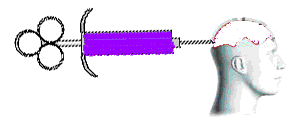Characters
Ash - Ashley is the popular kid in this film. He is the team captain that everyone on the team looks up to (except Sam). Being the best player on the team his very cocky and very sure of himself. He bullies Sam on the basketball court, in the changing rooms and at school. He gets annoyed when Sam's role in the team becomes bigger.
Sam - Sam is the unfortunate victim of Ashley and get constantly bullied by him. he never gets the play much and usually just sits on the bench. but slowly through the trailer other players on the team start to see some talent in him, in particular the coach. once is talent is recognised he plays more and more taking some of Ashley's spot light.
I will now break down our idea into quarters and explain what we have planed for each section:
First Quarter
The opening off our basketball trailer will start off with Ash playing a game and practising. Using a selection of different camera angles we will make it clear to the audience that he is the talented one. Meanwhile cut to some clips of Sam's character not getting any recognition. Then have Ashes team mates and friends congratulating him on his performance.
Second Quarter
Once the 2 characters have been introduction and we have established who is who we will then show the abuse that Sam gets from his team mates in a variety of clips. At this point Sam's character is new to the team and hasn't really established himself as a basketballer, the team just see him as the coaches helper/assistant. The coach then tells the team to make him feel welcome and leaves them to it.
Third Quarter
In the next series of clips we will show the coach giving Sam and opportunity to play in practise. He impresses the coach after watching him practise on his own. The coach is shocked by his unknown talent, but Ash still insists on giving him a hard time as well as the rest of the team. At this point we will show the audience the revelry that starts to build between the 2 characters and the tension that is built. In practise Ash never passes to him and doing his best to make he gets the ball s little as possible. But Sam still manages to shine.
Fourth Quarter
For the ending we decided to have it so that Ash challenges Sam to a one on one game to see who really is the better player. Crowds of people start to watch them play as the rivalry is at its peak at this point. Things start to get physical between them as the game starts to heat up. The game is tied and comes down to one last shot that Sam is about to take. The question is does he make it?
The End







